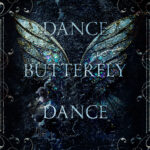Many know “Dancing in the Moonlight” as an upbeat, feel-good classic, a staple at parties and on summer playlists. But few are aware of the poignant origin story behind this beloved tune. Written by Sherman Kelly, the song emerged not from joy, but from the depths of a traumatic experience. This is the compelling journey of how a violent night in St. Croix inspired one of the most enduringly optimistic songs of the 1970s.
In 1969, Sherman Kelly found himself managing a nightclub in St. Thomas, Virgin Islands. An ill-fated day trip to St. Croix with friends on a rented yacht took a dark turn when Kelly and his girlfriend were overcome by seasickness. Arriving in St. Croix, they decided to stay ashore overnight, only to find themselves without money or a hotel.
After a disturbing encounter at a local inn, they opted to sleep on the beach under the stars. What followed was a nightmare. Kelly and his girlfriend were brutally attacked by a street gang. Kelly was severely beaten, and his girlfriend was assaulted. Amidst the violence, Kelly managed to fight back, and they eventually escaped to a hospital. They were later believed to be among the early victims of the notorious Fountain Valley Gang.
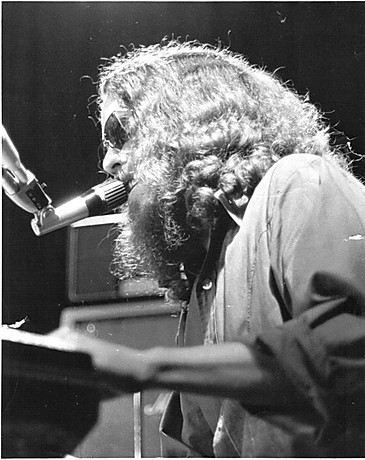 Sherman Kelly onstage in the 1970s. (Photo courtesy of Sherman Kelly)
Sherman Kelly onstage in the 1970s. (Photo courtesy of Sherman Kelly)
Sherman Kelly performing live during the 1970s, showcasing his early musical career.
Recovering from his injuries back home in Ithaca, New York, Kelly was grappling with physical pain and emotional trauma. Unable to perform, he turned to songwriting as a form of therapy. It was during this period of convalescence that “Dancing in the Moonlight” began to take shape.
“I envisioned an alternate reality, the dream of a peaceful and joyous celebration of life,” Kelly explained. “It was just me imagining a better world than the one I had just experienced in St. Croix.” The song became an escape, a hopeful vision crafted in the face of real-world darkness.
The initial reception to “Dancing in the Moonlight” was overwhelmingly positive. People resonated with its uplifting melody and lyrics from the start. However, Kelly himself couldn’t have predicted the song’s lasting impact.
Before King Harvest made it a hit, “Dancing in the Moonlight” was first recorded by Boffalongo, a band Kelly formed with his brother Wells Kelly and Larry Hoppen, among others. The Boffalongo version appeared on their 1970 album “Beyond Your Head.” Kelly candidly admits his vocal performance on this version was subpar, hampered by studio distractions and misguided attempts to enhance his performance.
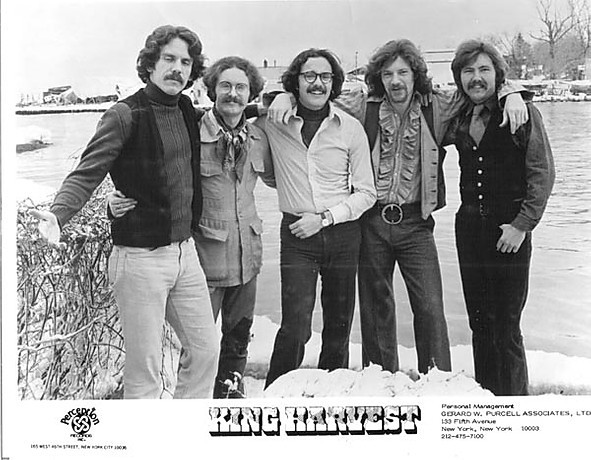 King Harvest in 1972. (Photo courtesy of Sherman Kelly)
King Harvest in 1972. (Photo courtesy of Sherman Kelly)
King Harvest band members in a promotional photo from 1972, the year “Dancing in the Moonlight” became a hit.
Despite Kelly’s reservations, the Boffalongo version gained regional popularity. Another group, High Broom, also recorded it in 1970, but neither rendition broke into the mainstream charts.
The song’s breakthrough came when Wells Kelly joined King Harvest, a band that included Doc Robinson, also a former member of Boffalongo. Wells introduced “Dancing in the Moonlight” to King Harvest, and their recording, featuring Robinson on lead vocals, became a national hit in 1972. It climbed to No. 13 on the Billboard Hot 100, solidifying its place in pop culture.
King Harvest invited Sherman Kelly to tour with them during the song’s rise to fame. While he enjoyed the initial excitement, the realities of touring life quickly wore thin. Kelly’s vocal abilities were also a point of self-deprecation, famously quoting a critic who quipped, “As a singer, Sherman Kelly is not too bad of a songwriter.”
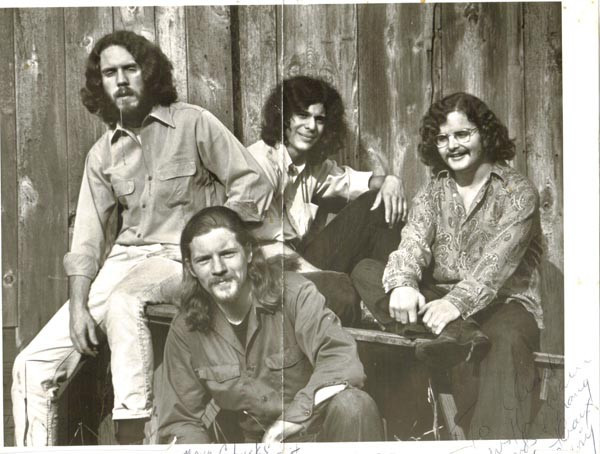 Boffalongo, circa 1970. (Photo courtesy of Sherman Kelly)
Boffalongo, circa 1970. (Photo courtesy of Sherman Kelly)
Boffalongo band photo around 1970, showcasing Sherman Kelly and other original members before King Harvest.
Wells Kelly later joined forces with John Hall and Larry Hoppen to form Orleans. Orleans also recorded “Dancing in the Moonlight,” further cementing the song’s legacy. Even today, Orleans, featuring surviving members and Larry Hoppen’s brothers, continues to perform the song live, keeping its spirit alive.
Sherman Kelly, after experiencing the transient nature of music industry success and enduring the personal tragedy of his brother Wells’s passing in 1984, transitioned away from the music world. He pursued advanced degrees and dedicated himself to a career as a psychotherapist. However, his musical journey didn’t entirely end there. In 2008, he released “Burnin’ the Candle,” an album featuring collaborations with his late brother.
The enduring appeal of “Dancing in the Moonlight” was further highlighted in 2000 when Toploader’s cover version became another international hit. The song has also graced numerous films, television shows, and video games, including “Guardians of the Galaxy: The Telltale Series,” ensuring its continued relevance across generations.
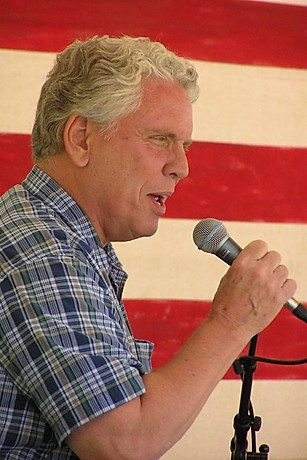 Sherman Kelly today. (Photo courtesy of Sherman Kelly)
Sherman Kelly today. (Photo courtesy of Sherman Kelly)
A recent photo of Sherman Kelly, reflecting on his life and the enduring impact of “Dancing in the Moonlight”.
From its dark origins in a Caribbean nightmare to its bright and breezy sound that resonates with millions, “Dancing in the Moonlight” is a testament to the power of music to transform personal pain into universal joy. It reminds us that even from the most challenging experiences, beauty and hope can emerge, inviting everybody to find their own dance in the moonlight.

